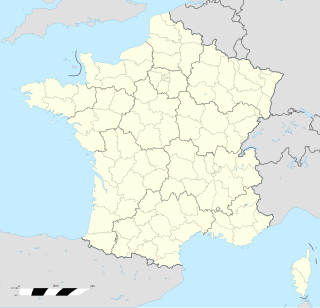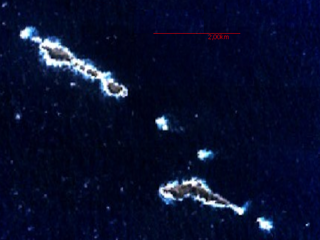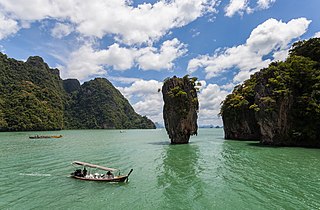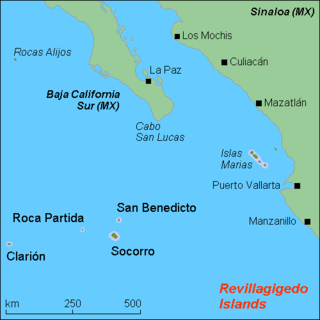 W
WThe following list enumerates and expands on notable sea stacks, including former sea stacks that no longer exist.
 W
WA rauk is a column-like landform in Sweden and Norway, often equivalent to a stack. Rauks often occur in groups called "raukfält" or "rauk fields". The limestone rauks of Gotland in the Baltic Sea are among the best known examples.
 W
WA stack or sea stack is a geological landform consisting of a steep and often vertical column or columns of rock in the sea near a coast, formed by wave erosion. Stacks are formed over time by wind and water, processes of coastal geomorphology. They are formed when part of a headland is eroded by hydraulic action, which is the force of the sea or water crashing against the rock. The force of the water weakens cracks in the headland, causing them to later collapse, forming free-standing stacks and even a small island. Without the constant presence of water, stacks also form when a natural arch collapses under gravity, due to sub-aerial processes like wind erosion. Erosion causes the arch to collapse, leaving the pillar of hard rock standing away from the coast—the stack. Eventually, erosion will cause the stack to collapse, leaving a stump. Stacks can provide important nesting locations for seabirds, and many are popular for rock climbing.
 W
WByrums raukar are a geological formation of a group of rauks on the western shore in the north of Öland, Sweden near the village of Byrum. The group consists of about 120 limestone stacks, rich in fossils, of up to 4 m (13 ft) high on a 600 m (2,000 ft) stretch of beach. The area is about 3 hectares, is a Natural Monument III and a nature reserve since 1935.
 W
WDarwin's Arch was a natural rock arch feature to the south-east of Darwin Island in the Galápagos Archipelago in the Pacific Ocean, and is now a pillar formation. The arch sat on an irregularly shaped, rocky, submerged plateau, nicknamed "the theatre". The arch collapsed into the sea on 17 May 2021 from natural erosion.
 W
WDiamond Rock is a 175-metre-high (574 ft) basalt island located south of "Grande Anse du Diamant" before arriving from the south at Fort-de-France, the main port of the Caribbean island of Martinique. The uninhabited island is about 3 kilometres (1.9 mi) from Pointe Diamant.
 W
WEl Dedo de Dios is a 30 m (98 ft) high sea stack in the Atlantic Ocean, off the northern part of Gran Canaria, one of the Canary Islands. During Tropical Storm Delta in November 2005, the thin top of this geological formation broke off and fell into the sea.
 W
WRaouché is a residential and commercial neighborhood in Beirut, Lebanon. It is known for its upscale apartment buildings, numerous restaurants, and cliff-side cafés that line Avenue de Paris, which forms part of the Corniche Beirut. The corniche or the wide, seaside sidewalk of Avenue de Paris is popular on weekends and evenings where strollers and joggers crowd the pavements.
 W
WÉtretat is a commune in the Seine-Maritime department in the Normandy region of Northwestern France. It is a tourist and farming town situated about 32 km (20 mi) northeast of Le Havre, at the junction of the D 940, D 11 and D 139 roads. It is located on the coast of the Pays de Caux area. In 2017, it had a population of 1,291.
 W
WIn Italian, faraglioni are stacks, a coastal and oceanic rock formation eroded by waves.
 W
WHaggits Pillar is a stack 203 feet (62 m) high in the South Pacific Ocean at the northwestern edge of the Ross Sea, lying 250 metres (270 yd) west of Scott Island and some 500 kilometres (310 mi) north-northeast of Cape Adare, Victoria Land, Antarctica. It measures 50 metres (55 yd) in diameter, yielding an area of less than 0.2 hectares.
 W
WThe Horse Block is a sea stack of the Falkland Islands. It is situated off the southwest coast of Weddell Island, 1.8 km southwest of Pillar Bluff.
 W
WIslas Ildefonso are a group of islands in Chile. The islands belong to the Commune of Cabo de Hornos in Antártica Chilena Province of Magallanes and Antártica Chilena Region. They lie 96 km (60 mi) west of Isla Hermite, part of Tierra del Fuego, and 93 km (58 mi) NNW of Diego Ramirez Islands, but only 27 km (17 mi) south of Isla Hoste or 23 km (14 mi) to rocks near Isla Hoste.
 W
WKhao Phing Kan or Ko Khao Phing Kan is an island in Thailand, in Phang Nga Bay northeast of Phuket. About 40 metres (130 ft) from the shores of Khao Phing Kan lies a 20-metre (66 ft) tall islet called Ko Ta Pu or Ko Tapu.
 W
WLange Anna, is a 47-metre (154 ft) high sea stack of Buntsandstein in the North Sea island of Heligoland, Germany. Its local name is Nathurn Stak. Climbing the stack is not allowed but tourists may view the rock from a distance.
 W
WPete's Pillar is a pillar rock or stack lying immediately east of Fildes Point at the north side of the entrance to Port Foster, Deception Island, in the South Shetland Islands. The pillar was presumably a well-known landmark to early sealers at Deception Island and appears on the chart drawn by Lieutenant E.N. Kendall of the Pilot Officer Pete St. Louis, RCAF, pilot with the Falkland Islands Dependencies Survey (FIDS) in 1949–50.
 W
WPetra tou Romiou, also known as Aphrodite's Rock, is a sea stack in Paphos, Cyprus. It is located off the shore along the main road from Paphos to Limassol. The combination of the beauty of the area and its status in mythology as the birthplace of Aphrodite makes it a popular tourist location.
 W
WRedonda is an uninhabited Caribbean island that is a part of Antigua and Barbuda, in the Leeward Islands, West Indies. The island is about 1.6 kilometres (1 mi) long, 0.5 kilometres (0.3 mi) wide, and is 296 metres (971 ft) high at its highest point.
 W
WRoca Partida ranks as the smallest of the four Revillagigedo Islands, part of the Free and Sovereign State of Colima in Mexico. The uninhabited island encompasses an extremely small area. Many divers rank it among the most beautiful dive sites in Mexico. Divers must obtain permits from the Mexican Armed Forces to enter the military zone surrounding the island.
 W
WRocas Alijos, or Escollos Alijos are a group of tiny, steep and barren volcanic islets or above-water rocks in the Pacific Ocean at 24°57′31″N 115°44′59″W. They are part of Comondú municipality of the Mexican state of Baja California Sur, and situated about 300 kilometres (190 mi) west of the mainland. The total surface area is 0.012 square kilometres (0.0046 sq mi).
 W
WSail Rock, or Parus Rock, is a natural sandstone monolith of late Cretaceous age located on the shore of the Black Sea, in Krasnodar Krai, Russia. It resembles the outline of a ship's sail, hence its name.
 W
WStrombolicchio is a sea stack of volcanic origin 2 km (1.2 mi) to the northeast of the island of Stromboli in the Aeolian Islands of Italy. Its name in the Sicilian language means Little Stromboli.
 W
WTri Brata is a set of three rocks at the entrance to the Avacha Bay, 400 meters (1,300 ft) west of cape Mys Zhukova. The rocks are aligned east-west 200 meters (660 ft). The floor area of each rock measures between 1,500 and 1,600 square meters, which results in an aggregate area of one-half hectare. This picturesque stack, or kekur, is considered a symbol of Petropavlovsk-Kamchatsky.
 W
WZealandia Bank, also known as Farallon de Torres or Piedras de Torres in Spanish, or Papaungan in Chamorro, consists of two rocky pinnacles about 1.5 kilometers apart, in the Northern Mariana Islands in the Pacific Ocean. One reaches a height of approximately 1 meter (3.3 ft) at low tide; the other does not normally broach the surface. They are located 11 nautical miles (20 km) north-northeast from Sarigan, in between Sarigan and Guguan, but because of their small size, they are not listed in most maps. Zealandia Bank is one of 18 units within the Mariana Arc of Fire National Wildlife Refuge, of the Marianas Trench Marine National Monument.